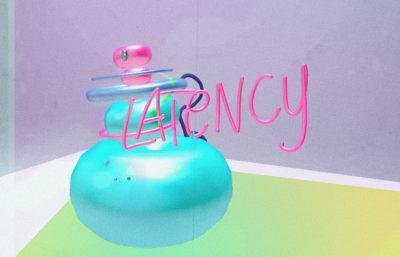CMAC Student Exhibit: Latency

Rubenstein Arts Center Gallery, Rm. 235
Artist Talk: Feb. 24, 2022 @ 3pm, with respondents Brittany J. Green and Thea Ballard
Opening Reception: Feb. 25, 2022, 5pm - 8pm
Latency is a term used in computing to describe the temporal delay between the transfer of data between sender and receiver. With ever advancing innovations in network speed, from fiber optic cables to 5G, the technological drive to minimize latency is palpable in our lives, shaping our experience of connectivity across society with implications for how we experience “real time” interactivity and communication. The impetus to reduce the “gap” in communication plays out across temporal registers, such as with the tensions between “now” and “later” reworked by predictive technologies, and also spatial ones, such as with the universe envisioned through Meta, where the world is reimagined as a fully realized digital navigable terrain.
The works in this exhibition bring a critical lens towards latency and its connections with various technosocial drives towards optimization. Latency, as these works explore in variegated ways, also implies a sense of dormancy. For Sigmund Freud, the interpretation of dreams had to do with the way that latent dream-content would be made manifest through analysis. Today, data analytic methods process data in quantities through micro-temporal operations that exceed human sensory thresholds, manifesting latent meanings through reading patterns into noise. Latency, in both our dreams and our data, promises us something of meaning, something already existing but not yet present, perhaps just beyond our ability to perceive.
These works angle to negotiate the multiple meanings of the term latency, moving the term away from its technological ties to optimization, regarded as a drive towards efficiency. Rather than viewing it as prohibitive to experience, the works in this exhibition offer various reflections on latency as the promise that something will come to pass at some point in the future. Latency, now dormant, possibly never manifest, is explored as a way to ground decisions, to act in the present, and to orient in specific ways towards specific futures. In this way, these works imagine latency as the very condition of possibility, especially as possibility is arrayed by techniques and epistemologies for seeing the future, and imagining specific futures at the cost of others.
